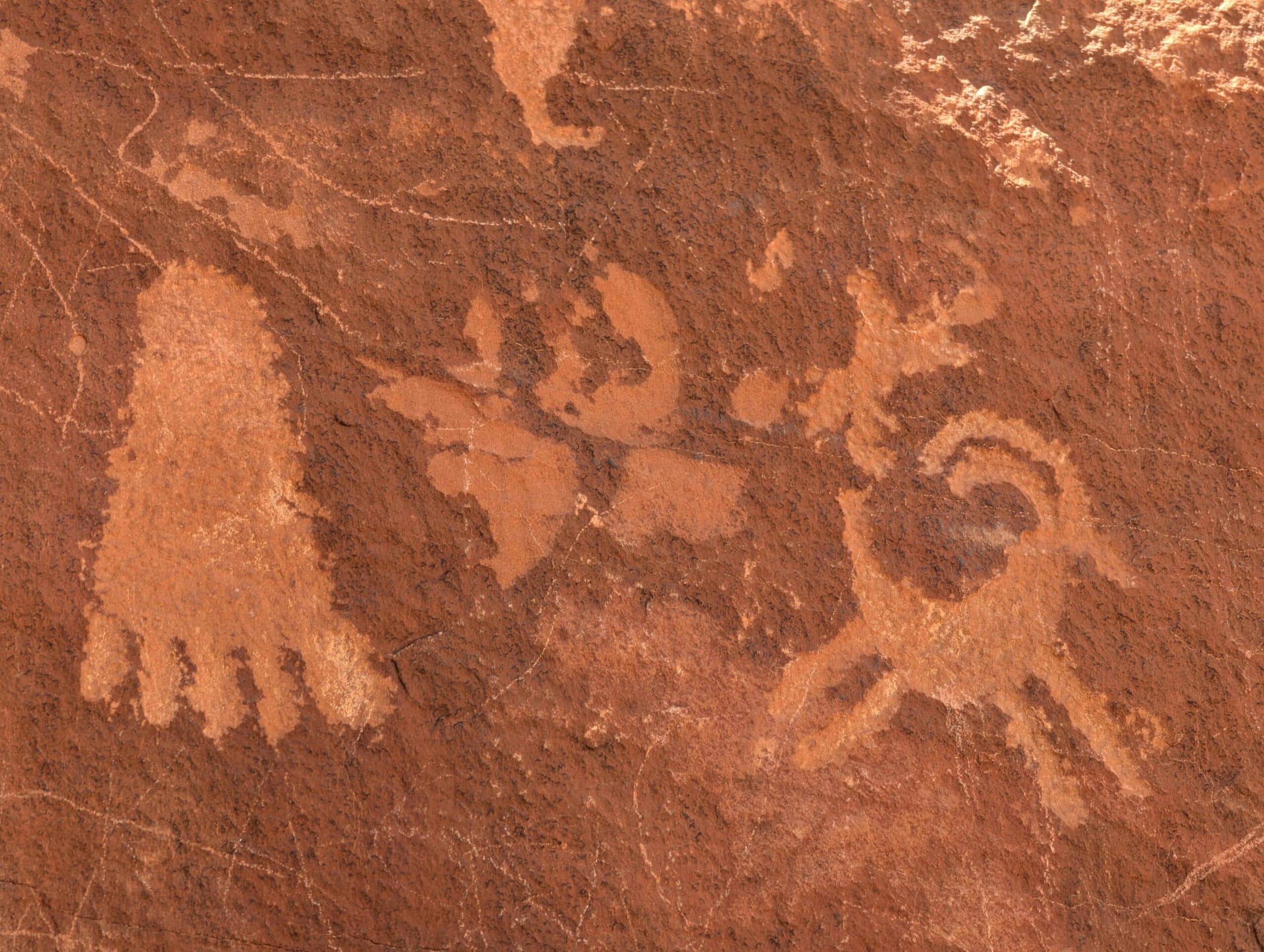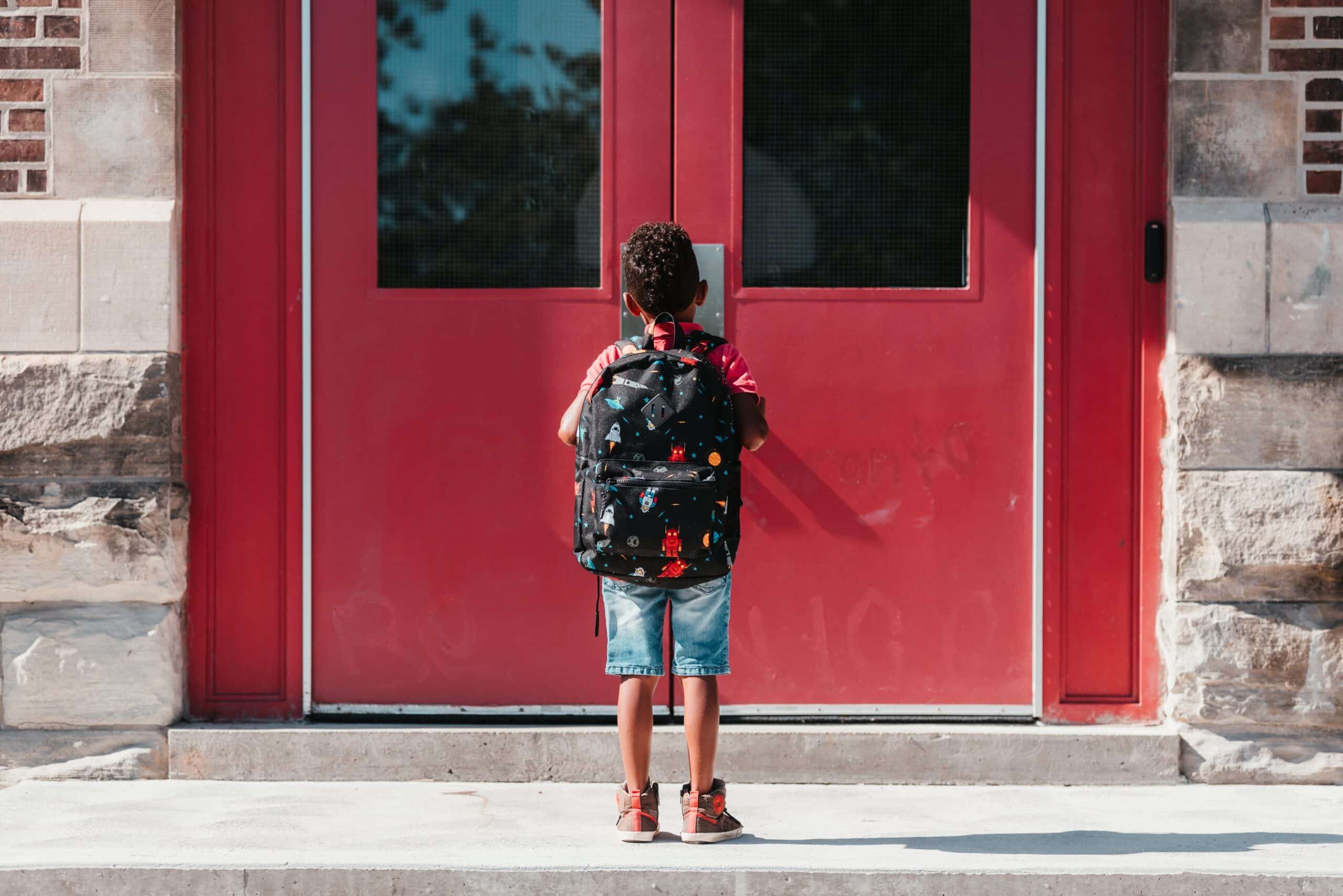


Lesson Objective: Scholars understand that ecology is the study of interactions between organisms and the environment and that there are many solutions to ecological problems. They learn how to weigh the advantages and disadvantages of different solutions.
Materials Needed
Prep
What are scholars doing in this lesson?
Do Now
Launch

Image credit: Alan R Walker, CC BY-SA 3.0, via Wikimedia Commons
Activity Adapted from Chapter 5: Designing Solutions in Disruptions in Ecosystems from NGSS Lead States. 2013. Next Generation Science Standards: For States. Washington, DC: The National Academies Press.
[Engagement Tip: Press scholars to think about how this problem will impact scholars who visit the camp in future years.]
Discourse Debrief activity:
Introduce the Essential Question:
Accountability (Lab Notebook)
Scholar responses will vary based on their ideas; assess scholar effort and general understanding that an argument should have a clear claim that identifies their stance on the problem, strong supportive evidence, and justification/reasoning that uses science content or ideas to make sense of their evidence.
Possible Full-Credit Exemplars:
I believe that chemical control will be the best way to solve the campsite problem. The pesticide will effectively kill all the ticks, and it will only take two months to complete. The campsite can complete this chemical control during the time of the year before scholars visit the campsite, and they won’t have to worry about ticks causing problems for any visitors.
I think that physical removal is the best way to solve the campsite problem. It may take a few years to complete, but by burning the land and through a personal checking system, they will be certain no ticks survive. Plants can regrow over time, and then the campsite can be fully up and running.
I think they should relocate the campsite as the solution to their problem. The other options involve potential harm to the environment, and this solution will leave all organisms safe. It might be difficult to sell and move to another place, but there is a lot of space in New York for them to make a new campsite.
Biological control is the best solution because the ticks can be removed naturally. Also, by only bringing in 30 toads, it won’t be that many to affect the environment there. This solution will allow scholars to come to the campsite soon, because toads are not harmful.
Possible Partial Credit Exemplars:
They should use chemical control because it will kill all of the insects, not just the ticks, and no one likes insects when they are camping.
I think the best solution is to relocate the campsite because it is the easiest and least harmful to the environment.
Scoring Award points as follows:
Lesson Objective: Scholars understand the difference between biotic and abiotic factors and can explain how parts of an ecosystem depend on each other for essential resources. Materials Needed
Prep
What are scholars doing in this lesson?
Do Now
Launch
Activity
Discourse Debrief activity:
Make broader connections:
Make connections to the Essential Question:
Accountability (Lab Notebook)
Scholar responses will vary based on their ideas. Assess scholar effort and general understanding that a hypothesis should have a clear claim that answers the question and strong supportive evidence from data and their prior scientific knowledge.
Possible Full-Credit Exemplars:
The campsite tick population has increased because over the last 15 years, the amount of sunlight and the temperature have both doubled. Maybe the ticks survive better in warmer climates, and that is why they have increased so much.
The campsite tick population has increased because the number of voles and deer has increased. The deer population is twice as big as it was in 2000. Because ticks eat blood, maybe if they have more animals to eat, they will grow and reproduce more quickly.
Possible Partial Credit Exemplars:
The campsite tick population has increased because the animals changed. Because ticks eat blood, maybe if they have more animals to eat, they will get bigger.
The campsite tick population has increased in the last few years because there are fewer birds around. Birds might eat ticks.
Scoring Award points as follows:
Lesson Objective: Scholars understand that food webs model the flow of energy in an ecosystem and that organisms can be classified based on their diet.
Materials Needed
Prep
What are scholars doing in this lesson?
Do Now
Launch
Activity
Discourse Debrief activity:
Make broader connections:
Make connections to the Essential Question:
Accountability (Exit Ticket) Below is a food web that represents the feeding relationships in an aquatic ecosystem.
1.Based on your knowledge of science and the food web above, fill out the table below based on what type of organism is listed (producer or consumer) and what their source(s) of energy are. [4]
| Organism | Type of Organism | Source(s) of Energy |
|---|---|---|
Seal |
Consumer |
Penguin, Seagull, Fish |
Seaweed |
Producer |
Sun |
2.Marine worms are one type of decomposer that exists in aquatic ecosystems. If the marine worm was added to the food web above, what would be its source of energy? Explain using your knowledge of science to support your response. [2]
All of the organisms would be the energy source for the marine worm. Decomposers break down decaying material to get energy, so when any of the organisms in the aquatic ecosystem die, the decomposer can use them for energy.
Scoring Award points as follows:
Lesson Objective: Scholars understand that energy flow in an ecosystem can be modeled with an ecological pyramid. They can explain that energy is conserved in an ecosystem through the work of decomposers.
Materials Needed
Prep
[Tip: Have paper towels handy in case of any spills.]
What are scholars doing in this lesson?
Do Now
Launch
Activity
Discourse Debrief activity:
Make connections to the Essential Question:
Accountability (Exit Ticket) Directions: Revise your ecological pyramid of the campsite ecosystem using your Lab Notebook and your knowledge of science. Be sure to include the following in your model:
The type of trophic level (1–4) [1]
Autotrophs [1]
Heterotrophs [1]
Organisms from the campsite ecosystem that make up each level [1]
An arrow that represents the direction of energy flow [1]
Scoring Award points as follows:
Lesson Objective: Scholars learn that patterns of predator–prey and competition occur at every level of the ecosystem and are essential for survival. They also learn about the negative effects of invasive species on resource availability, increased competition, and population fluctuation.
Materials Needed
Prep
[Tip: This game can be played in the classroom but it might be better if it’s played hallway, gym, or outside space to allow for more movement.]
What are scholars doing in this lesson?
Do Now
Launch
Activity
Discourse Debrief activity:
Make connections to the Essential Question:
Make broader connections:
Accountability (Exit Ticket) A group of ecologists were studying the different predator–prey relationships of a desert ecosystem over a 15-year period.
1.Using the prediction of predator populations over the 15-year period, complete the graph by finishing the “Prey” curve through year 15. [1]

Image and question adapted from Chapter 1: Wolves in Yellowstone in Disruptions in Ecosystems from NGSS Lead States. 2013. Next Generation Science Standards: For States. Washington, DC: The National Academies Press.
The ecologists had different ideas of what would happen if another predator entered the ecosystem:
Dr. Eco Logyrocks: “The addition of another predator would decrease the amount of resources available for other organisms.”
Dr. Fauna Matters: “More predators means more competition among the predators!”
Dr. Herb Ivorous: “If we add more predators, the populations in the ecosystem will decrease significantly!”
2.Which ecologist is the most scientifically accurate? Explain using your knowledge of science to support and justify your response. [3]
Possible Exemplars:
Dr. Eco Logyrocks’s statement is the most accurate, because if predators have the same food source, they will compete for the same prey. If both organisms are eating the same type of food, there will be less of that resource available for them or other organisms that rely on them.
Dr. Fauna Matters is correct, because if another predator is added and eats the same prey, they will compete for the same resource. When there is a shared resource among organisms, they compete with each other to get the resource in order to survive.
I agree with Dr. Herb Ivorous, because if another predator is added, they will take energy away from other organisms. When there is less energy for organisms in an ecosystem, they start to die off and their population will decrease.
Scoring Award points as follows:
Lesson Objective: Scholars understand that organisms engage in symbiotic relationships (parasitism, mutualism, and commensalism) that further support the idea of interdependence in ecosystems. Materials Needed
Prep
What are scholars doing in this lesson?
Do Now
Launch
Activity
[Tip: If scholars are still struggling to grasp other ecological relationships, like predator–prey relationships or competition, have them watch the first Crittercam footage “Fish Thieves Take Rare Seals’ Prey.”]
Discourse Debrief activity:
Make connections to the Essential Question:
Accountability (Exit Ticket) A species of sea slugs called Melibe engeli feed on hard and soft corals. Some algae, photosynthetic organisms, live on hard and soft corals. When the sea slugs ingest their food, they keep the algae alive and move them to special parts of their bodies. When the algae undergo
photosynthesis, the sea slugs receive the products, and in return the algae receive protection and nitrogen (an essential nutrient that promotes growth in organisms). Additionally, the chlorophyll found in the chloroplasts of the algae give the sea slugs a green color, which helps to camouflage them in their environment.

Image Credit: Rickard Zerpe, CC BY-SA 2.0, via Wikimedia Commons
Both organisms benefit by helping the other survive. In the text, the sea slugs give protection to the algae by ingesting the algae and moving them to special parts of their body. The algae help sea slugs by producing oxygen and sugar during photosynthesis that the sea slugs can use for cellular respiration.
Scoring Award points as follows:
Lesson Objective: Scholars understand that the health of an ecosystem depends on biodiversity. They can explain the impact of genetic variation and adaptations on the biodiversity of an ecosystem.
Materials Needed
Prep
[Tip: This game can be played in the classroom, but it might be better if it’s played in the hallway, gym, or outside space to allow for more movement by scholars.]
What are scholars doing in this lesson?
Do Now
Launch
Activity Adapted from Ecosystem Musical Chairs by Peace Corps
Discourse Debrief activity:
Make connections to the Essential Question:
Accountability (Exit Ticket) The following model shows how a tropical rain forest ecosystem has changed in the last ten years.
Note: Each symbol represents a population of that type of organism found in the ecosystem.
A tourism company located near the rain forest released the following statement:
“Unfortunately, the rain forest ecosystem is experiencing a decline in its health and cannot have any visitors.”
1.Evaluate the accuracy of the company’s statement. Explain using evidence from the model and your knowledge of biodiversity to support and justify your response. [3]
The tourism company’s statement is accurate because an ecosystem’s health is measured by its biodiversity. In the model, over time, the ecosystem has fewer types of organisms present. When an ecosystem has fewer varieties of species, the amount of resources for different organisms change. If an organism has a certain adaptation and the resource they are adapted for is no longer present, they will not be able to survive.
2.Which is the correct sequence that leads to biodiversity in an ecosystem? [1]
Scoring Award points as follows:
Lesson Objective: Scholars understand that different physical and biological disruptions can lead to population decline and an imbalance in biodiversity that can take many years to recover from. Scholars also learn that different natural disruptions can cause primary or secondary succession and result in the survival of specific species over others.
Materials Needed
Prep
What are scholars doing in this lesson?
Do Now
Launch
Activity
Discourse Debrief activity:
Make connections to the Essential Question:
Accountability (Exit Ticket) There was a large volcanic eruption, and a thick cloud of ash blocked most sunlight from reaching the ecosystem for several months. Below are three statements on what will happen to the ecosystem:
As the ecosystem recovered from the volcanic eruption, ecologists studied the organisms in the same pond. Each pond represents a year following the eruption.
2.Order the pond pictures from oldest (closest to volcanic eruption) to youngest (closest to present day) by writing their letter on lines below. [2]
Scoring Award points as follows:
Lesson Objective: Scholars learn that human interference in an ecosystem can be detrimental to biodiversity. Materials Needed
Prep
What are scholars doing in this lesson?
Do Now
Launch
Activity
Discourse Debrief activity:
Make connections to the Essential Question:
Accountability (Exit Ticket) The table below shows the population of deer in a grassland ecosystem over a period of eight years. Use the information below and the table to help you answer the questions that follow.
| Year | Deer Population | Average Mass (kg) | Number of Deer Births | % Malnourished (Severely Underweight) Deer |
|---|---|---|---|---|
1 |
100 |
30 |
30 |
5 |
2 |
97 |
29 |
25 |
4 |
3 |
105 |
31 |
15 |
3 |
4 |
83 |
29 |
5 |
46 |
5 |
57 |
27 |
7 |
32 |
6 |
56 |
23 |
6 |
25 |
7 |
58 |
20 |
8 |
18 |
8 |
58 |
20 |
5 |
10 |
Question adapted from Chapter 3: Interactions Between Populations and Resources in Disruptions in Ecosystems from NGSS Lead States. 2013. Next Generation Science Standards: For States. Washington, DC: The National Academies Press.
When asked about the impact of the farmland and fencing, farmers stated the following:
“This change will be beneficial for the deer population.”
Evidence & Justification 1: According to the table above, deer are not reproducing at as high of a rate as before the fences were put up, showing that the population is decreasing.
Evidence & Justification 2: After the fences were put up, the percentage of deer that are malnourished went up by over 40 percent, meaning there is not enough food to feed the population.
Scoring Award points as follows:
Lesson Objective: Scholars understand that ecologists consider economic and social impacts in addition to environmental ones when proposing solutions to ecological problems. Materials Needed
Prep
What are scholars doing in this lesson?
Do Now
Launch
Research Activity adapted from Chapter 5: Designing Solutions in Disruptions in Ecosystems from NGSS Lead States. 2013. Next Generation Science Standards: For States. Washington, DC: The National Academies Press.
Discourse Debrief reading:
Make connections to the Essential Question:
Make broader connections:
Accountability (Lab Notebook)
Scholar responses will vary based on their ideas. Assess scholar effort and general understanding that an argument should have a clear claim that identifies their stance on the problem, strong supportive evidence, and justification/reasoning that uses science content or ideas to make sense of their evidence.
Possible Full-Credit Exemplars:
I believe that chemical control will be the best to solve the campsite problem. The pesticide will effectively kill all of the ticks, and it will only take two months to complete. The campsite can complete this chemical control during the time of the year before scholars visit the campsite, and they won’t have to worry about ticks causing problems for any visitors. The staff will only be out of work for two months and will not need to relocate in order to keep their jobs.
I think that physical removal is the best way to solve the campsite problem. It may take a few years to complete, but by burning the land and through a personal checking system, they will be certain no ticks survive. Plants can regrow over time, and then the campsite can be fully up and running. It does not cost much money to create a fire, and the campsite could use their own staff to check for ticks, which would allow them to keep their jobs during this time.
I think they should relocate the campsite as the solution to their problem. The other options involve potential harm to the environment, and this solution will leave all organisms safe. It might be difficult to sell and move to another place, but there is a lot of space in New York for them to make a new campsite. Additionally, if they buy a new and better campsite, they might attract more campers and be able to make more money over time.
Biological control is the best solution because the ticks can be removed naturally. Also, by only bringing in 30 toads, it won’t be that many to affect the environment there, and it will not cost much to purchase or find toads from another environment to bring over. This solution will allow scholars to come to the campsite soon, because toads are not harmful.
Scoring Award points as follows:
Do Now
Launch
[Engagement Tip: Make this a class-wide competition by incentivizing the group that convinces the most scholars to change their stance and join their group!]
Activity Activity adapted from Chapter 5: Designing Solutions in Disruptions in Ecosystems from NGSS Lead States. 2013. Next Generation Science Standards: For States. Washington, DC: The National Academies Press.
Discourse Debrief activity:
Make connections to the Essential Question:
Accountability (Exit Ticket)
I do not think that ticks should be removed from all ecosystems because they help to maintain the balance and biodiversity of an ecosystem. Ticks serve as both predators and prey for different organisms in the campsite ecosystem, so removing ticks would eliminate a food source for the praying mantis and the cardinals, limiting their ability to receive energy and survive.
While this might be a positive benefit for the organisms the ticks feed off, it may also create an increase in those organisms, like the deer, which may also disrupt the balance of energy flow. Additionally, the ecosystem needs to have a variety of species to maintain its biodiversity and stay healthy. If the tick is removed, we would see a decline in the overall ecosystem’s health.
The tick also acts as a partner in a symbiotic relationship with bacteria, which helps the bacteria survive. If the tick was eliminated, we would also be eliminating the bacteria from the environment. While certain bacteria are harmful, other bacteria act as decomposers in the ecosystem, which help to cycle matter and energy back to the soil for producers.
Overall, the tick is needed by the ecosystem, and even though their population has increased, natural disruptions or changes to the ecosystem may help solve this problem. For example, changes to weather or a natural disaster could change the environment and the ability for the tick to survive, so the problem would be solved without human interference.
Scoring Award points as follows:
Vocabulary List
resources
Access a wide array of articles, webinars, and more, designed to help you help children reach their potential.

ES PBL Grade 2: Brooklyn Bridge
Educator
Curriculum
Elementary School
2nd
PBL

ES PBL Grade 3: Iroquois and Lenape
Educator
Curriculum
Elementary School
3rd
PBL

Grade 1: PBL School – How It Works!
Educator
Curriculum
Elementary School
1st
PBL

Grade 4: PBL A Nation is Born
Educator
Curriculum
Elementary School
4th
PBL
NEWSLETTER
"*" indicates required fields
